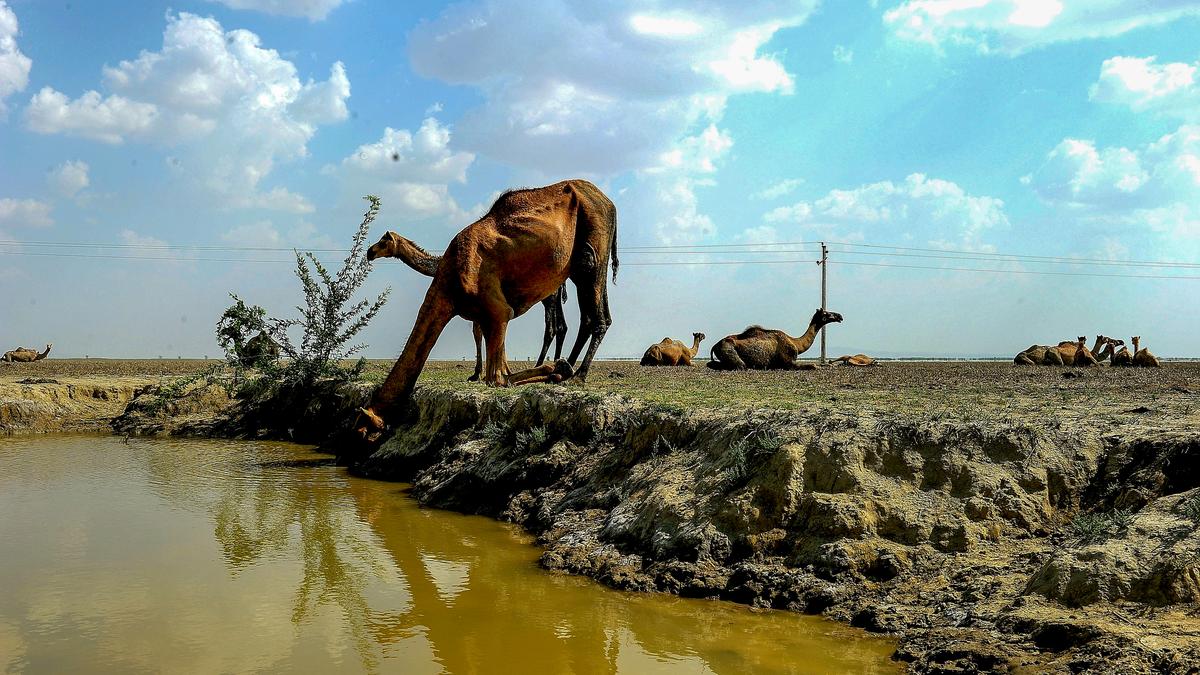
Banni is a vast grassland in the southern part of Kutch, and extends to nearly 3,500 sq.km. | Photo Credit: Vijay Soneji
Some of the next batch of cheetahs being brought in from Africa, as part of the next phase of Project Cheetah, may be sent to a cheetah-breeding and conservation centre being built in the sprawling grasslands of Banni in the Rann of Kutch in Gujarat, senior officials in the Environment Ministry told The Hindu.
While the Gandhi Sagar sanctuary in Madhya Pradesh is the preferred location for the next lot of wild cats, and Banni has been considered as a potential habitat for over a decade, officials say there is a surge in activity to set up basic infrastructure in Banni and get it ready this year.
“The next [lot of] animals will go to Gandhi Sagar. However, the Gujarat government is setting up suitable enclosures in Banni, where cheetahs can be bred. If all goes to plan, there is no reason (the site) cannot be readied in the next six months and some animals sent there,” an official told The Hindu.
Banni is a vast grassland in the southern part of Kutch and extends to nearly 3,500 square kilometres. While that is plenty of space in Banni, and more than that available in Kuno and Gandhi Sagar, there is barely enough prey to sustain a viable population. Antelope species such as chinkara and blackbuck — the prey for the cheetah — are present in the Banni landscape but not enough for the big cat.
“It will take years for enough prey, and practically this means chital — the main prey for the cheetahs in India — that needs to be brought into these grasslands. There isn’t an official plan yet but it is a site that is under active consideration,” the official added.
While the Madhya Pradesh Forest department is tasked with managing the cheetahs at Kuno in Madhya Pradesh, an expert steering committee gives scientific inputs on managing the programme. This includes recommending future sites for introducing fresh batches of cheetahs at regular intervals.
Of the 20 adult cheetahs brought to Kuno since September 2022, 13 are surviving in Indian conditions. Additionally, there are 13 cubs making it 26 animals overall. However, the maximum capacity (in terms of available prey) of the Kuno reserve is for 21 adult animals. The government’s estimate is that India will need to import around 10-12 adults every year for the next five years to groom a sustainable breeding population and will require multiple sites where the animals can be accommodated. However, Gandhi Sagar too needs many more chital to provide enough prey for the cheetah. A challenging factor over there are leopards — just as in Kuno — that compete with the cheetahs for the same prey. Leopards have a longer presence in Kuno and are usually more successful at snagging chital. “One attractive aspect of Banni is that there are no leopards. So with enough prey, we can over time sustain a larger population. But this is a long-term plan,” an official reasoned.
In October, all of the cheetahs in Kuno are expected to be released into the wild. Currently, most of them are in the bomas — or large enclosures that are a kilometre wide and long. These animals were brought in after a rash of infections and acclimatisation problems contributed to fatalities. Following the release of all the animals into the wild, preparations for the next batch of animals are expected to begin again from South Africa and Namibia.


